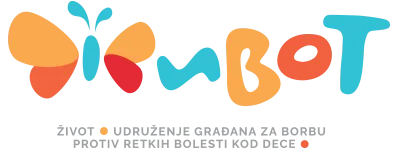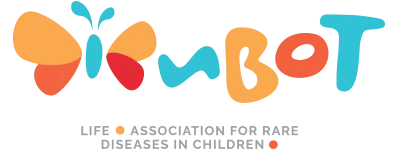What is Batten disease (NCL)
Forms
There are 4 main types of NCL (types 1-4) including 2 types that start earlier in childhood and an extremely rare type that occurs in adults. The symptoms are the same but appear at different times and progress at different rates.
Infantile NCL (Santavuori-Haltia disease)
It starts between 6 months and 2 years of age and has a rapid progression. Children with this disease fail to thrive and have prominently small heads (microcephaly). Also, short, sharp muscle twitches are typical. myoclonic jerks. The first signs of this disease include: an arrest in psychomotor development with progressive deterioration, other motor disorders or epi-seizures. This type has the fastest progression.
Late infantile NCL (Jansky-Bielschowsky disease)
It starts between the ages of 2 and 4. Typical early signs are loss of muscle coordination (ataxia) and epi-seizures with progressive mental deterioration. The progression is also rapid in this case and ends in death, usually between 8 and 12 years.
Juvenile NCL (Batten disease)
It starts between 5 and 8 years. Typical signs are progressive vision loss, epi-seizures, ataxia. This type progresses less rapidly and ends in death in the late teens or early 20s, although there have been cases of patients living into their 30s.
Adult NCL (Kuff’s disease or Parry’s disease) usually begins before the age of 40 and causes milder symptoms that progress more slowly and do not cause blindness. Although the time of death varies from case to case, this type does reduce life expectancy.
Inheritance
Childhood NCLs are autosomal recessive disorders, meaning they only occur when a child inherits 2 copies of the defective gene, one from each parent. When they inherit one defective gene, each of their children has a 1 in 4 chance of developing NCL. At the same time, there is a 1 in 2 chance of having only one copy of the defective gene. Such persons are only carriers, so they do not develop the disease, but can only pass on the defective gene to their children.
Adult NCL can be inherited as an autosomal recessive (Cuf) or, more rarely, an autosomal dominant (Parry) disorder. In autosomal recessive inheritance, all individuals who inherit even one copy of the defective gene develop the disease.
How many people have Batten disease (NCL)
Batten disease/NCL is very rare, occurring in only 2-4 cases out of every 100,000 births in the US. Although it occurs more often in Finland, Sweden and other parts of northern Europe, then in Newfoundland and Canada, it is estimated that there are less than 500 children with this disease at any given time in the world.
Diagnosis
Since loss of vision is an early indicator, Batten disease can already be noticed during an eye examination. An eye specialist may notice the deterioration of the optic nerve that occurs in the 3 childhood forms of NCL. However, since such degeneration also occurs in other eye diseases, this cannot be a definitive indicator, but it can be used to refer the child to a neurologist for examination. In order to concretely confirm the diagnosis, various tests are required.
Diagnostic tests for Batten disease include blood and urine tests, skin or tissue sampling, EEG, eye exams, and brain scans such as CAT or MRI. Recent developments in the field have made it possible to perform enzyme blood testing for infantile and late infantile forms that look for the specific enzyme that is lacking in these disorders.

